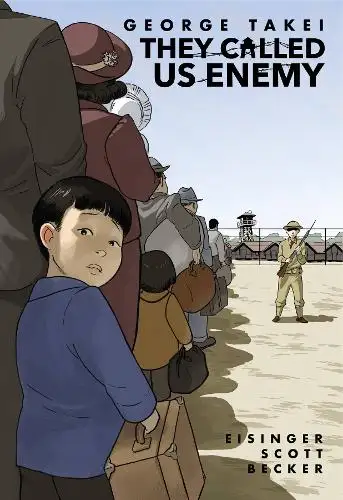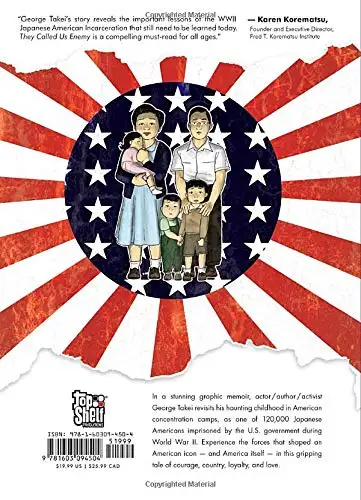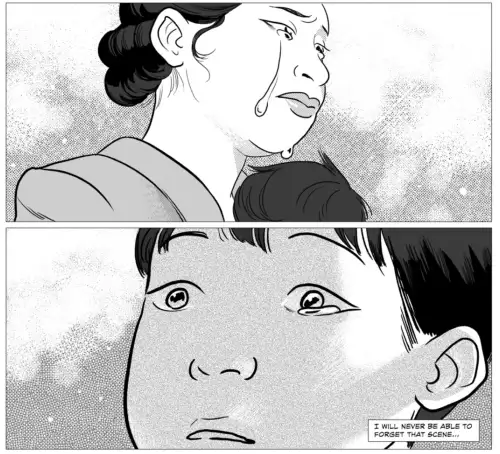
They called us enemy
By George Takei, Justin Eisinger, et al.
Length: 208 pages
Rating: 9.5/10
First Published: 2019
After the Pearl Harbor attack, many Japanese-Americans in the US were forced out of their homes by the government and put in military camps.
This graphic novel is a memoir about George Takei’s life that focuses on his family’s experience in internment. George (famous for Sulu in Startrek and Hiro’s dad in Heroes) was 4 years old when his family left their home.
The memoir won the American Book Award and Eisner Award for Best Reality-Based Work.
Review
I remembered being stunned when I first heard about the internment. It seems most history curricula in Europe erased it.
The book goes through many historical events, the loyalty questionnaire, the citizenship trials, and how his mother almost got deported. It begins when George’s family is first taken out of their home. George was 5 years old.
Disclaimer: There’s a controversy about the correct term for the camps. That’s beyond the scope of this. It’s a book review.

The art is greyscale, light and soft, with round shapes. Nothing particularly violent is ever showed in the book.

There’s always a fine balance to strike when depicting humans in complex, historical situations. You want to represent reality but not too much. Maus is the most extreme example, simplifying humans to mouse, rats or dogs.

Summary
George speaks fondly about his mother’s attitude. No matter what happened, she was determined to create a pleasant experience for her children.
George and his family were first put in the Rohwer Relocation Center, in Arkansas. It was hot and humid, but they made friends and collaboration was prevalent. The family spent 1 year and 7 months in Arkansas. Then, they were moved to Tule Lake, where the atmosphere was a lot more tense.
He mentions Herbert Nicholson from Vroman Bookstore who always helped people in the camps. I’m always amazed by actions like this. They remind me of this quote from The Hobbit.
I have found that it is the small everyday deed of ordinary folks that keep the darkness at bay. Small acts of kindness and love.”
— J. R. R. Tolkien
George spent a total of 4 years behind wires.
The rest of the books breezes through his adult life. Here are a few noteworthy events:
- Back in Los Angeles after the camps, George remembers a teacher giving him a hard time for no reason.
- He met and protested with Martin Luther King.
- Startrek was the best time of his life. His fame gave him reach to share and advance his ideas.
- In 1991, he got $20,000 in cash as a compensation from the US government.
Highlights, covers, art and quotes are copyright to their respective authors.